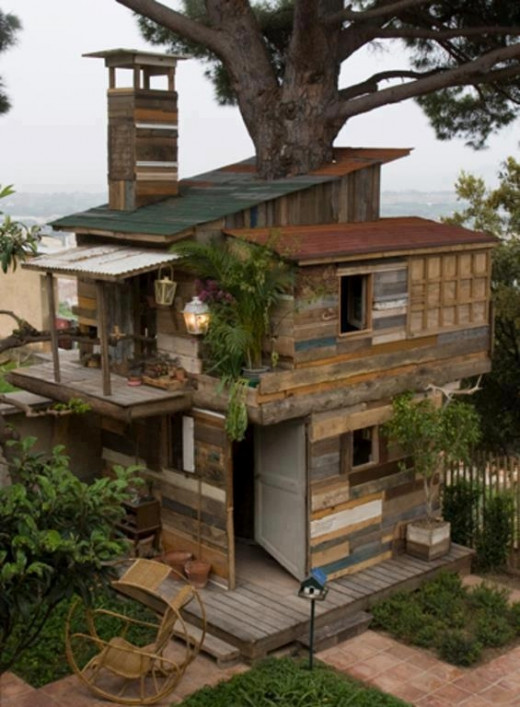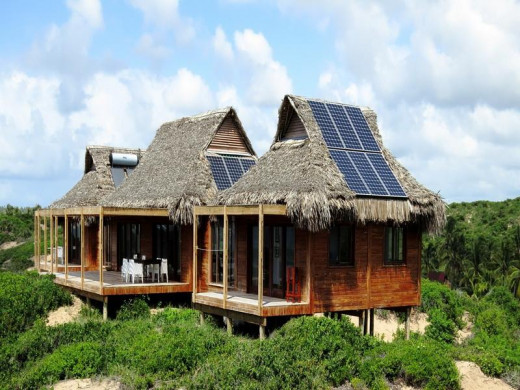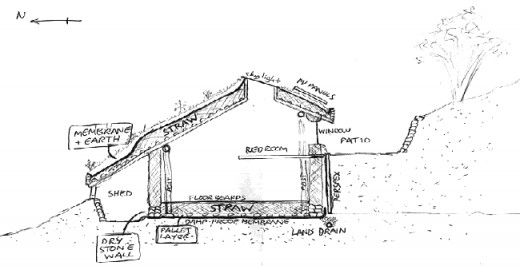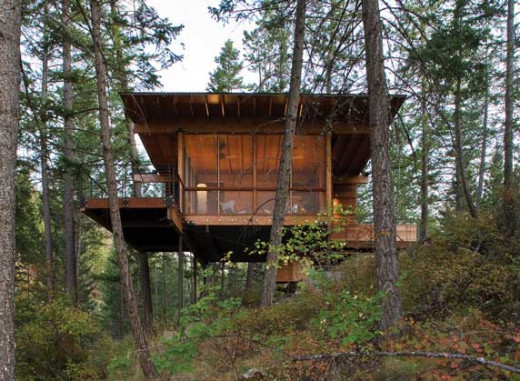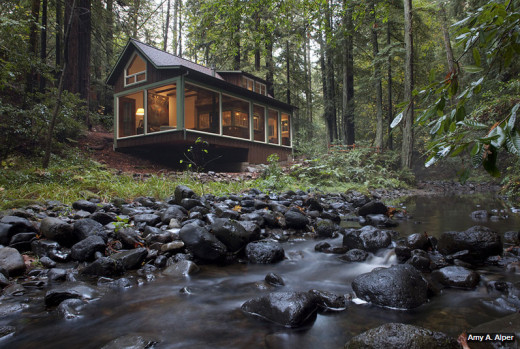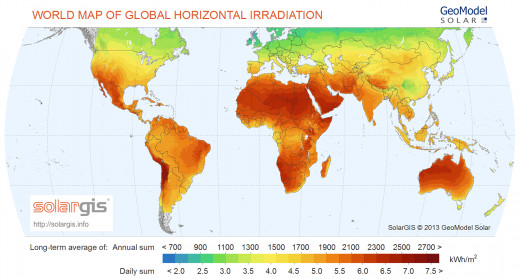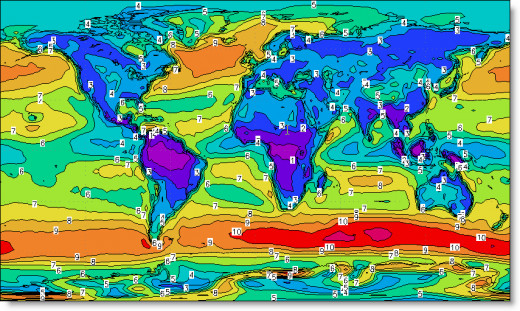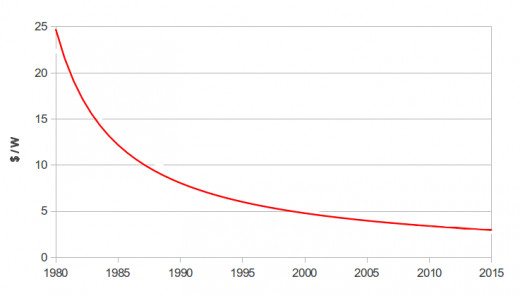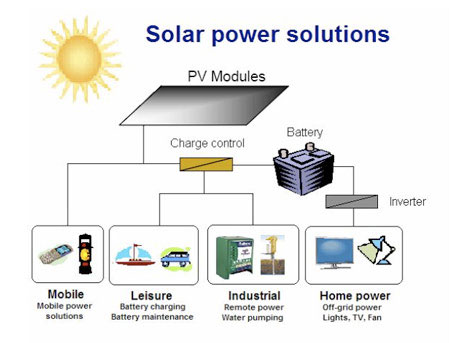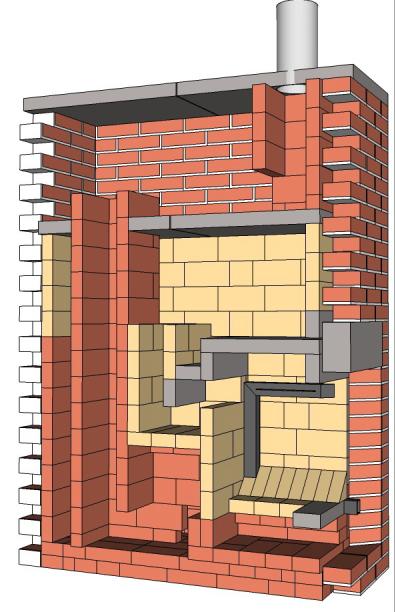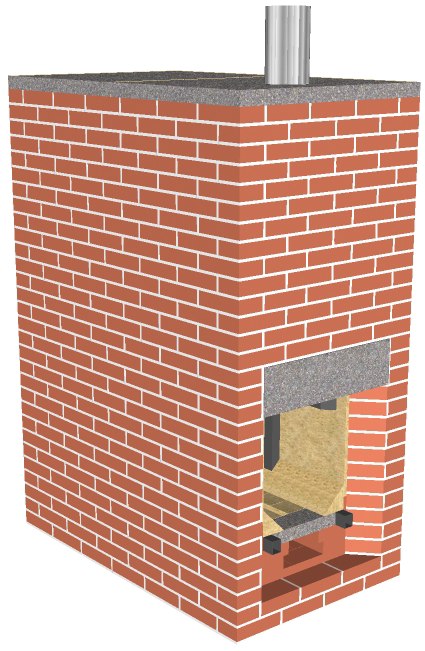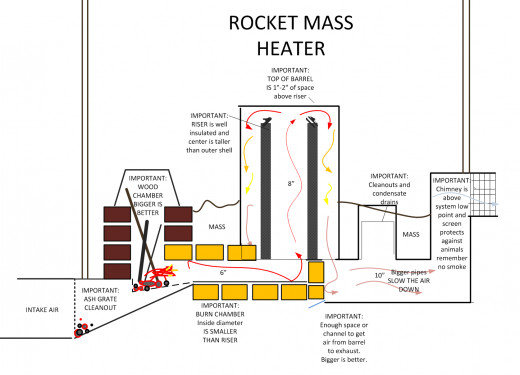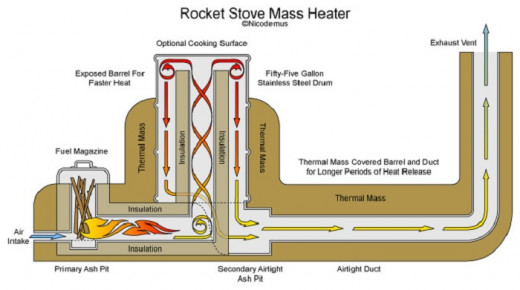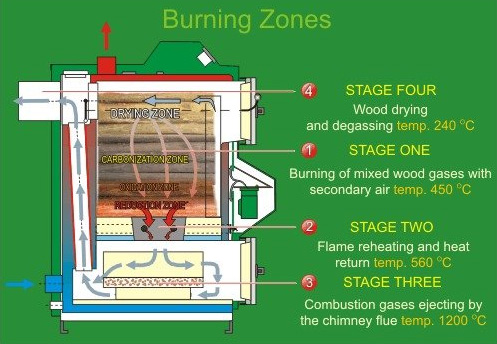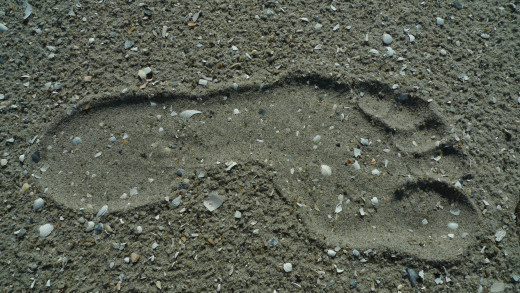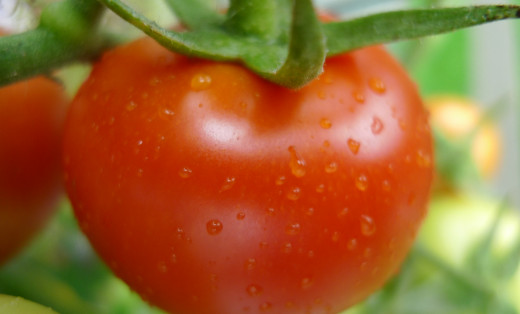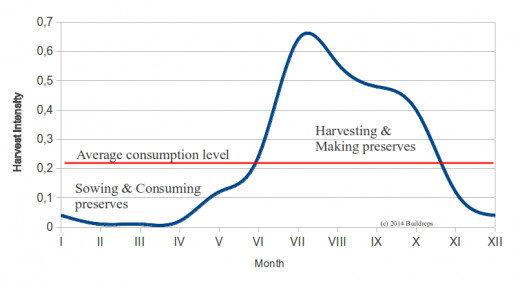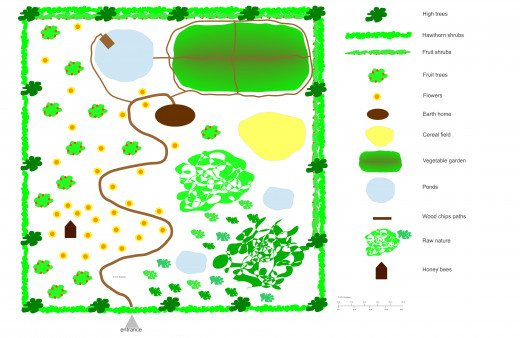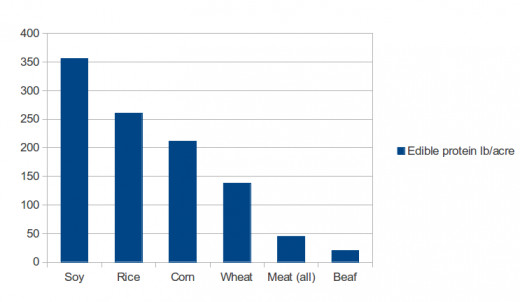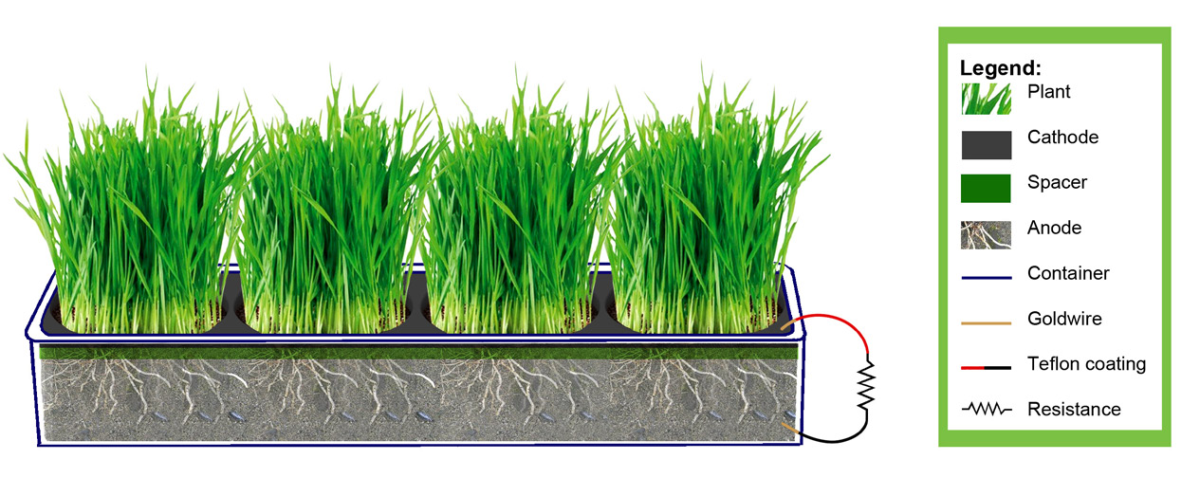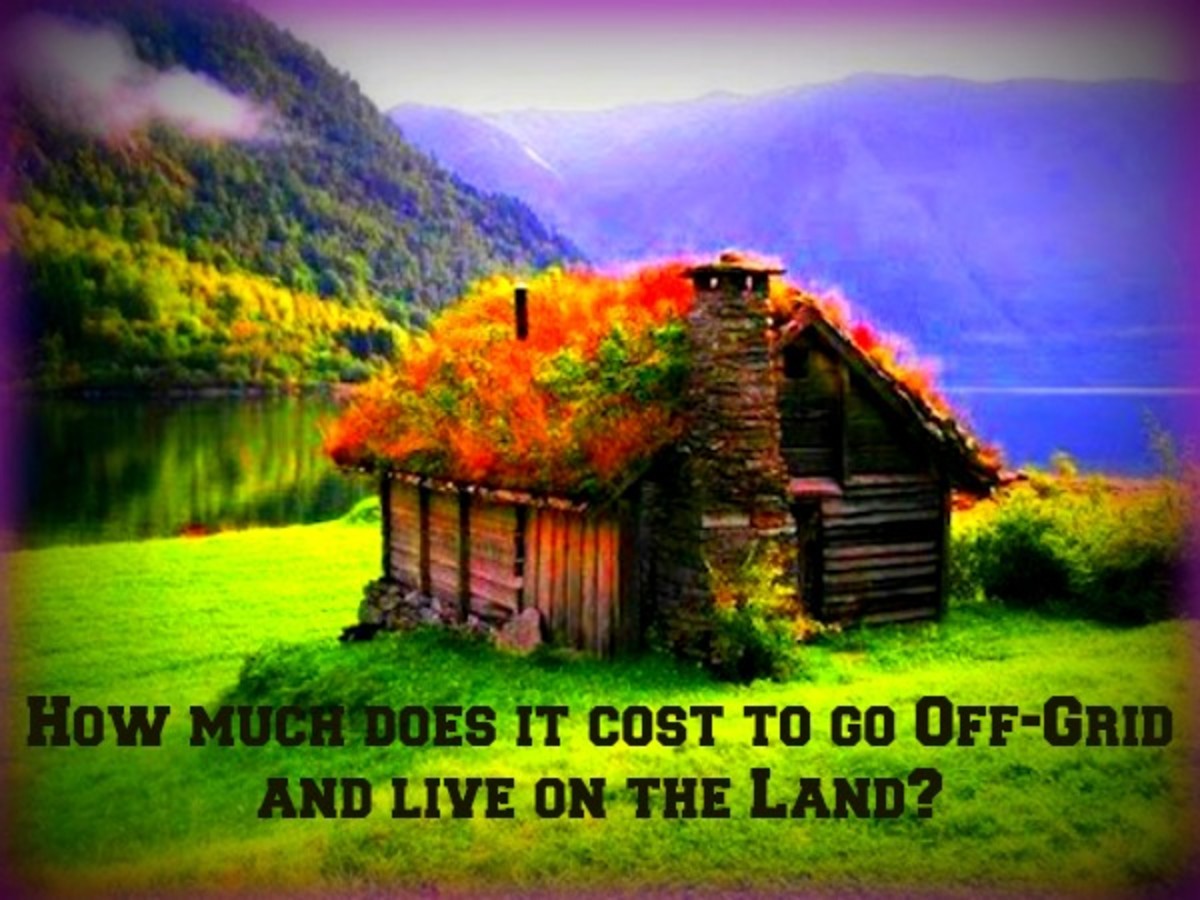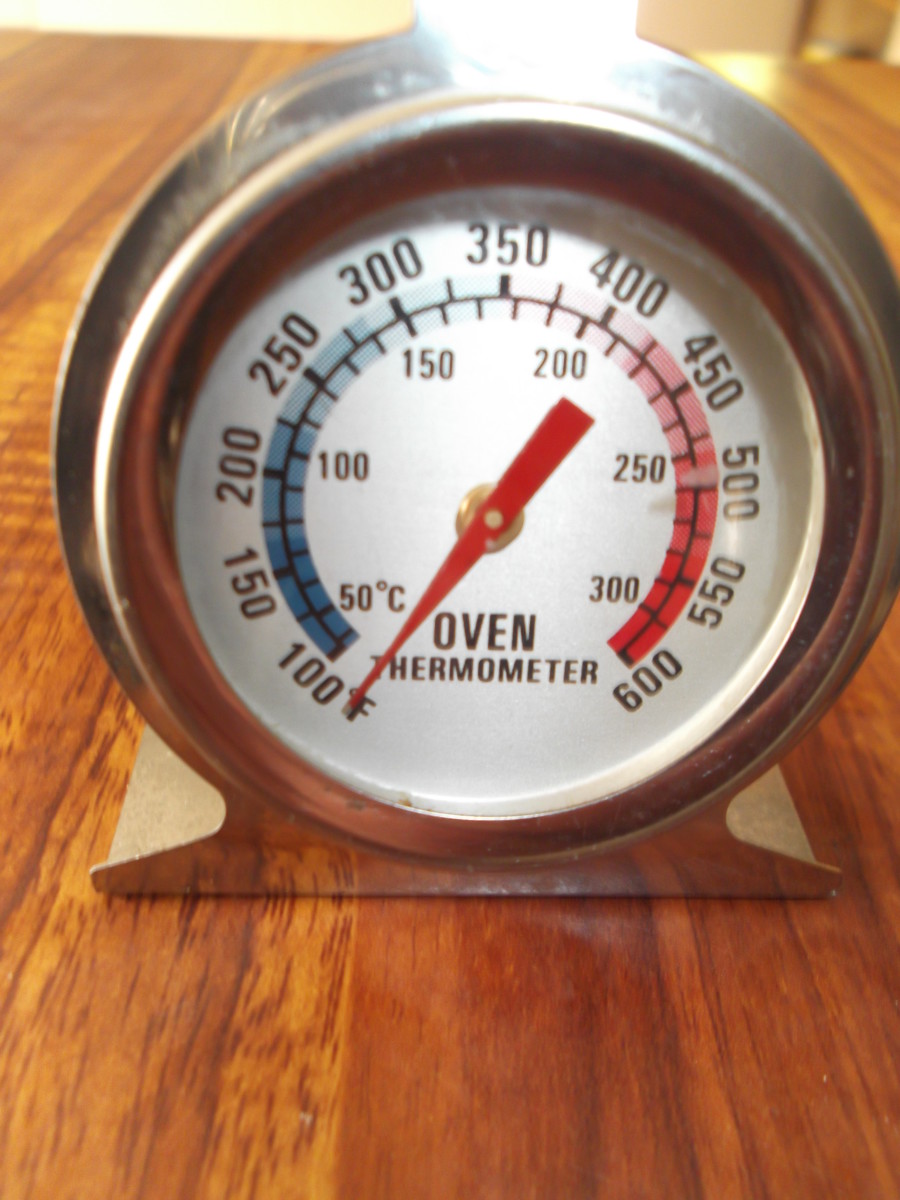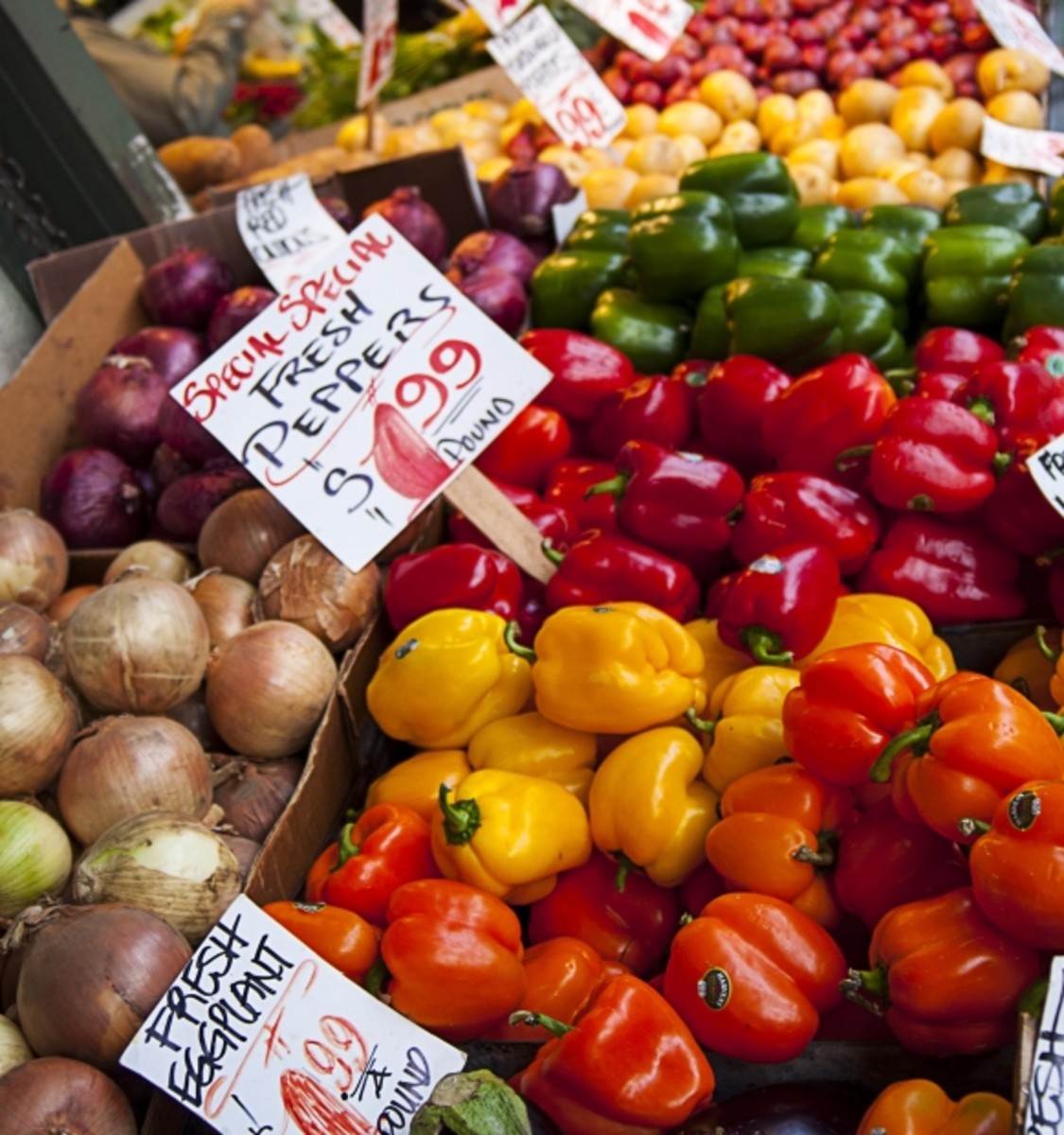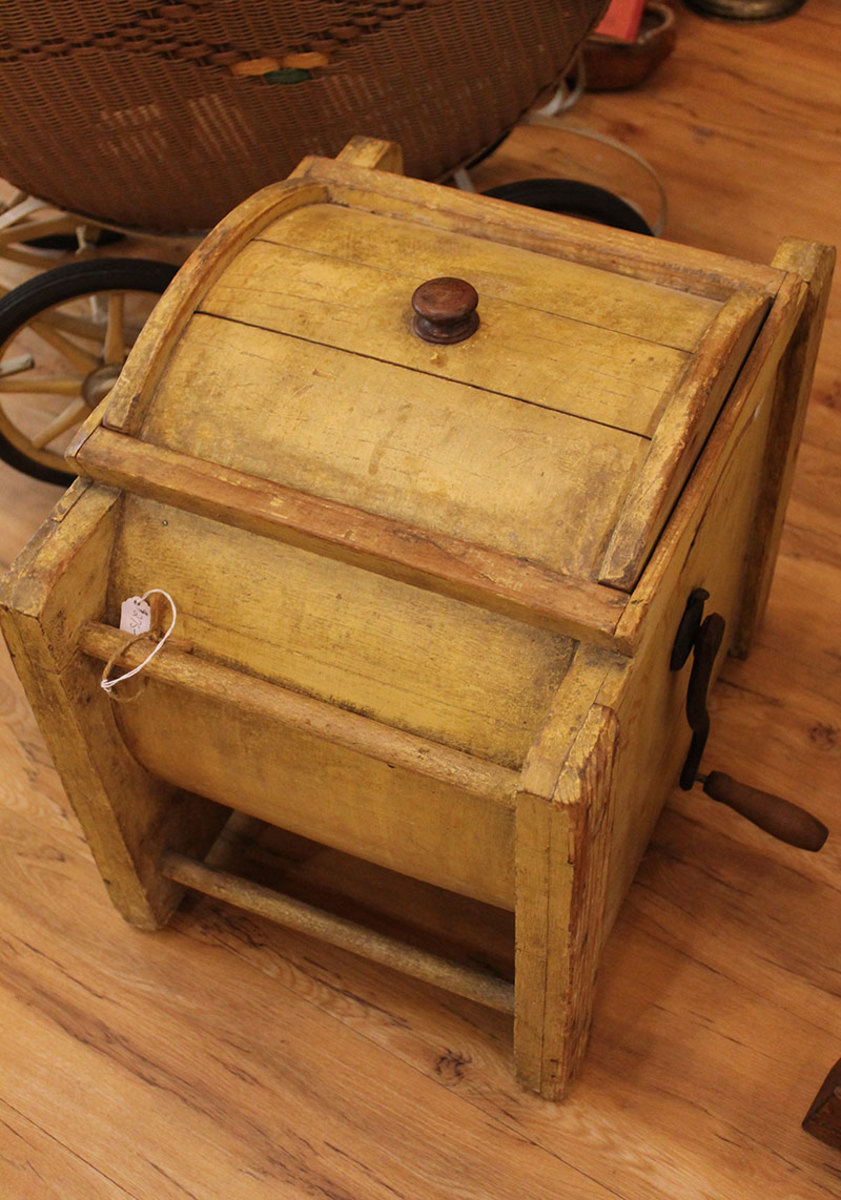Living Off the Grid - Up To Which Level Can You Handle?

Would you like to live off the grid?
Free Yourself - Why Should You?
To live off the grid is not something that appeals to everyone. Living fully off the grid is about freedom, to become 100% self sufficient. If you feel a strong desire to live like this, you have to prepair yourself thoroughly. If you start it the wrong way, you might be caught in the same life patterns where you were before.
Not all people will feel themselves a slave - a slave from what? So why should you free yourself?
There are several definitions of freedom, I picked randomly a few:
- Freedom is the absence of necessity, coercion, or constraint in choice or action,
- Freedom is the exemption from external control, interference, regulation, etc,
- Freedom is the legal allowance to do whatever you want insofar as you do not harm or coerce other people against those other people's wills.
Thus, freedom does not include the right to limit other people's freedom because that would violate the definition of freedom. Does this definition counts for governments as well? Why not? Freedom should also exclude the presence of anarchy.
There are a few considerations you can lay along the definition of freedom:
- Are you free in every choice?
- Can you freely decide to take a health care insurance or to stay without?
- Can you freely decide how much taxes you can afford?
- Can you live where you want? In every country?
- Can you decide to give your children private lessons? To free them from school?
- Are you aware how many times you are caught on camera each day? While it doesn't serve the crime rates. Why all the effort then? Freedom and privacy go close together.
- Is freedom about just throwing your garbage on the street and just doing what you want?
I think that living in freedom is about living according to your heart. Your heart doesn't long for possessions, money and status. Your heart neither wants to pollute, to scam or to hurt anyone or anything.
Off Grid Pioneers
The wish or perhaps even more the awareness to live in freedom is currently only reserved for a small minority. They are the new pioneers.
This article is meant for people that have a strong wish to be really free. This article can help to find ways to fulfill your wishes. I researched only some of the hurdles you will bump up against.
Who doesn't want to live in nature - in happiness, freedom and abundance? Most people want this, but there sticks also much prejudice to this dream, that living close to nature requires refrain from all earthly pleasures. Is this true? It will strongly depend of your own mindset and will power. It will also depend of your budget and your ingenuity.
I always lived as a successful technocratic entrepreneur in the grid, until I realized how our technocratic society is destroying our privacy step by step, in the name of the so called good cause.
Fasten your seatbelt and read with me up to the highest level of detachment.
Gradations Living Off the Grid
Gradation
| Related detachment
|
|---|---|
First
| Supply own electricity
|
Second
| Supply own water and sewer
|
Third
| Supply own Heating
|
Fourth
| Own waste treatment
|
Fifth
| Supply own food
|
Higher levels include always (all) lower level(s). Reshuffling this order may result in chaos, for every level becomes increasingly difficult.

Questions That You Could Try To Answer For Yourself
If you are playing with thoughts to live closer to nature and maybe to get totally off the grid, you could try to answer at least the following questions:
- Why do I want to live closer to nature?
- Who is coming with me and what about children?
- What is my goal by doing so?
- How much am I attached to material stuff?
- Am I running away for something? For what? And why?
- What are my expectations?
- Can I live without a steady job?
- What would I gain and what would I lose?
- Do I want to have a postal address? If not possible, how to solve this?
- What if my ID is expired, can I or renew it then?
- Is it possible to live completely of barter?
- Could I totally live without money? What are the consequences?
- What if I will be old and infirm?
- Do I want to die and buried there?
There are perhaps also more general questions you could try to answer for yourself:
- Why are most people living in dirty, expensive cities?
- If you cut of all material things - what good remains to live in cities?
- Why is permanently living close to nature considered to be miserable? And why?
What is/would be your reason to live off the grid?
Finding a Location
The reason to live off the grid can be as different as the amount people; cut costs like mortgages, utilities, maintenance costs, council taxes, perhaps other costs. Or just to live close to nature to make own food and live in peace and quietness with nature. What is your reason?
It is in any case obvious that this wish is easier to fulfill the further you are from densely populated areas.
1. A proper location is easier to find in rural areas.
One of the most common mistakes people make in searching for a nice parcel, is to safe on the costs of land. A full off grid lifestyle requires peace and quietness. In practice this means at least 1 hectare (2.5 acres) of land. Because it is not unlikely that in the future your view on the right off grid lifestyle changes with progressive insights. Like for example making an income from selling crops and fruit from your own land, while you initially factored to supply only in your own/family needs. When searching for a parcel, make the balance that larger surfaces may be cheaper per square feet.
2. Do not buy a (too) small plot.
The climate you are used to from birth, is the best climate to start an off grid life style. There are many psychology reports about the effect that sudden climate changes have on people, that may flip the balance between happiness or suffering. This is one effect. The other effect is that people find easier solutions in their own climate - from growing crop, to finding water up to the most basic technical solutions. And we all know that simplicity is the key to success.
3. Look first in the regions of your own climate.
The last and probably best advice is: do not depend of anyone, no bank, no farmer or any other bondage. Try to find ways to acquire the plot without making any debts.
4. Don't take a mortgage on the plot.
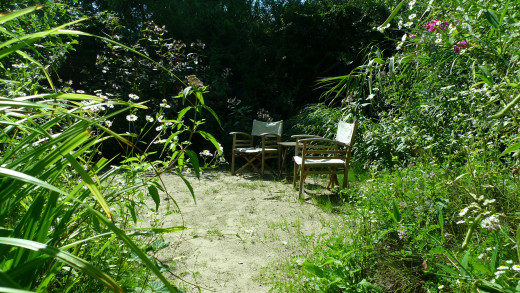
Turnkey Off Grid Home
There are these days many different kinds of turnkey off grid homes that cost between $100 to $150 per feet2. Depending of your wishes it may be even more.
The wish to live off grid will prompt all inventiveness. The sooner you start with using your inventiveness the better. Starting to live in a turnkey project won't trigger inventiveness, only when repairs are necessary and this might be a little late.
Putting yourself in a turnkey off grid situation may cause many adaptation problems, that are caused by a lack of inventiveness, engagement and possibly a missing stimulus. Building a home with own hands will trigger all your inventiveness, before and during the building process. Asking help of others can be hard sometimes as well. Starting with as less money as possible is the best start for living off the grid.
DIY Home Building
There are many self builders, but just a few managed to built for real small budgets. According to Simon Dale, who built a Hobit home in England, it is possible to build a home around $10/feet2. Owen Geiger (earthbagbuilding.com) is also fairly experienced in building very nice constructions for even smaller budgets.
All people who are successful in building earth homes for small budgets, have all the same things in common. They use mainly materials collected from their direct natural surrounding. Some of the materials are bought in a DIY store. Take a look at their websites to understand how simple it can be, without too much suffering. Their experiences are easy to find in Google search.
The cheapest way to build is with locally found materials like:
- Earth and mud,
- Straw and reed,
- Branches and trunks.
You should be aware that not all examples may be applicable, because your climate may be too wet or too cold. This means that the building style is depending on the climate.
You should also be aware of the limitations in floor space and height. A few simple rules must be obeyed:
- Limit the free span of the roof. Do not make larger free spans than 4 to 5 meter (12-15 feet). Larger spans must be supported with columns. If you live in a snowy climate, make sure the roof is constructed on this.
- Limit the area of a second floor, for it will raise the height of the construction. Wind load is a serious force to reckon with. Especially when you're attempting to limit the construction costs.





First Grade Off Grid - How to Supply Own Electricity
The most common two ways to supply off grid electricity is with Solar panels and Wind energy. Both techniques have their pros and cons. The most important pro of wind energy is that it is usable in areas with less sun, above latitude 60 degrees. In most other cases is solar energy more viable.
Solar power will be the most interesting method to supply electrical power, because of the simplicity of the installation, without moving parts and low maintenance costs.
Depending on the gradation off grid, you can consider to deliver the surplus of energy back to your provider, which will be rewarded by your provider. This system is still depending on the grid. You also have to be aware that solar energy is booming, which will put valuation under pressure.
You might consider supplying electricity to your neighbour in the form of barter.
- Costs of Solar panels: $4,000 - $12,000 depending on the size of the installation. I wouldn't bother trying to make them from dump materials, for this won't work properly.
Pros Solar Power
| Cons Solar Power
|
|---|---|
Recoup of the investment two or three times
| Expensive
|
Low maintenance costs
| Not effective in colder regions
|
Easy and quick installation
| Battery pack required to stabilize output
|
No permits required
| They must be kept clean from dirt, snow, leaves, etc
|




Inventive ways to make potable water
Second Grade Off Grid - How to Supply Own Water and Sewer
There are a few ways to provide in the water needs, depending where the off grid home is or will be situated. You might not want to depend on systems that require regular maintenance, like carbon filters or chlorination systems, because this kind of maintenance requires constantly recurring money. In this case you could try to find a piece of land with a natural well that gives potable water.
The most suitable way to collect water will depend on your location, which can be one of these:
- underground well (constant supply),
- rainwater (intermittent supply will require collecting tank),
- creek (intermittent or constant depending of the situation),
- natural well (constant supply (although not in all cases)).
It is unnecessary to flush the toilet with potable water. The main systems in your off grid home can run on collected rain water. For this it has to rain enough of course. Five to ten litres of potable water per person per day is enough for drinking and cooking. This is not difficult to obtain, by using nano filters or systems that generate water from air, like Skywater does. You can even build your own potable water generator from a dehumidifier.
I will give an example how to calculate the required amount of rain water. If a region collects annually 300 mm/m2 of rainwater and the area from which rainwater is collected is 1000 m2 (10,000 ft2) you will have annually 30,000 litres (8,000 gallons) of rainwater, which is average around 80 litres (21 gallons) per day. This is enough to shower and to flush the toilet, for a two person household. To use rainwater to shower requires a simple heating system (a solar water heater for example) and a simple filtering system. Collecting large amounts of rainwater can be done by soil draining, that is stored in an underground tank, in order to flatten peeks and dips. The overflow of the tank can feed on its turn a nearby pond. The volume of the tank must be large enough to overcome the regular dry season. For example a regular period of three months drought, requires a tank of at least 7,200 litres (1,900 gallons).
The best way to process waste water is by using a septic tank. A septic tank sets requirements for the use of chemicals, cleaners and detergents, otherwise the essential bacteria’s can be killed, which will reduce the effectiveness of the tank. Once the tank is in use the outflow will approximately equal the inflow. The contents of the tank will be degraded into sediment that will accumulate on the bottom. On top of this sludge floats a liquid top layer. The overflow of the tank will distribute the liquid part over a field of buried perforated pipes. Usually the sediment in the tank must be emptied once in a few years, depending of the size.
- The costs to install a complete system for collecting and using rainwater, to make separately small amounts of potable water and a septic tank system will be, depending of your own ingenuity, between $1,000 to $15,000. If you are able to do as much as possible by yourself with recycled materials, it will cost you barely nothing, less than $1,000. Creativity, ingenuity and non choosiness are essentials. The absence of time pressure will make your task much easier and probably much cheaper as well.
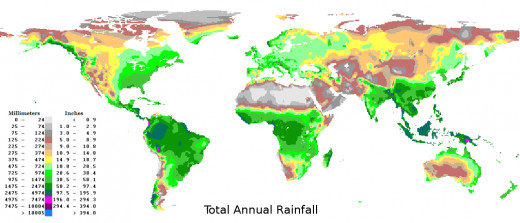
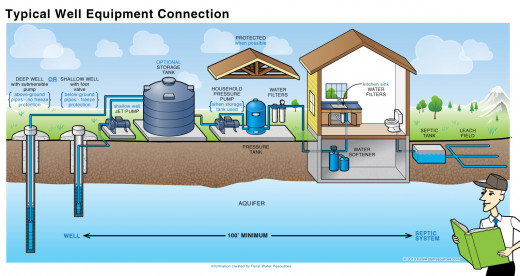
Third Grade Off Grid - How to Supply Own Heating
There are several options to heat your off grid home, depending on the climate and therefore the necessity to heat.
Active ways of heating listed in decreasing dependency:
- Heating oil,
- Propane,
- Natural gas,
- Geothermal energy,
- Wood gasification stove.
The latter two options are the best off grid methods, because they are the most self supporting. Heating with electricity or solar panels is much too expensive, that is why I don't define this way of heating to be an off grid method. Heating with oil, propane or natural gas are no real off grid heating methods as well.
Wood gasification stoves, pellet stoves and rocket stoves are so efficient with the burned wood (or wood like materials), that these stoves are able to heat a whole home with just a few wood logs per day. (do not mix these stoves with wood gasifiers systems that make gas). The efficiency of the best stoves are between 80% and 95%. Some types are only for direct heating, while other types are designed for indirect heating as a central heating system and/or for heating showering water. But these systems are far more complicated then just the stoves for direct heating, which makes them preferable.
Making your own clean gas from wood by using gasifier systems is a total other chapter. It is possible and not as difficult as it seems. But making real clean gas, that you can use in commercial appliances, is difficult. Making 'more dirty' gas that you can use for cooking is not complicated. You can find more information here.
Geothermal energy is the most sustainable way to heat and to cool as well. In general the temperature inside the Earth increases at a rate of approximately 25°C per kilometre. Geothermal heating is a low temperature heating method, that requires a large heating surface, because the ΔT is relatively low. ΔT is a technical expression for the difference in temperature between the heater and the surrounding air. The higher ΔT the smaller the surface of the heater can be. In most cases is a Geothermal heating system equipped with a heating pump that consumes 20% to 25% energy (electricity) of the total amount of generated energy. The vertical tubes through which the medium is circulated are at a deepest depth of between 30 to 150 meters, depending of the latitude and the geothermal gradient of the location. One of the largest cons of geothermal energy is the unfamiliarity it has on earthquakes and other unwanted environmental consequences. In 2006 a Swiss company specialised in Geothermal energy caused a 3.4 Earthquake, with their large scale deep activities.
Locating windows on the sunny side is a great way of passive heating. Cheap and simple. Remember that window frames are expensive, while glass panes are cheap. The glass panes are the essentials. Double pane HR glass panes, cost around $60/m2 ($6/ft2). Triple HR glass panes cost between $100/m2 to $150/m2 ($10/ft2-$15/ft2). To cut the costs of the project you can consider to use only casement frames to adjust the window panes. Fixed windows are much cheaper and simpler than hung windows. The finishing touch can be up to your imagination and it's not difficult to create this from scratch materials. Having time and no hurry is again crucial.
- Costs of wood gasification: A good wood stove will cost between $1,800 and $3,000. You can build your own stove as well, by using fire bricks, refractory cement and an oil drum. In this way you can build a stove for less than $150. I would recommend to use a stainless steel oil drum, because plain steel will corrode quickly.
- Costs of Geothermal heat: At least $15,000 for a simple system, up to $50,000 for a complex system. Drilling the holes and fixing the tubes is not something you can do by yourself.
Pros Geothermal Heating
| Cons Geothermal Heating
|
|---|---|
Comfortable warmth, due to the low temperature gradient.
| Dependent of electricity (1÷4)
|
Heating is always available, as long as there is electricity.
| Procurement costs. Depency of experts.
|
Low running costs, little to worry about.
| Still unknown influence on the earth and environement.
|
.
| |
Pros wood gasification stove
| Cons wood gasification stove
|
Easy DIY
| Requires refilling once in a while
|
Reliable and simple
| Stockpile annually
|
Warm and cozy
| -
|
Requires no electricity (depending of type)
| -
|





Fourth Grade Off Grid - How to Treat Own Waste
Own waste treatment without burdening the outside world with your waste is far more complicated than it appears at first hand. The fourth level off grid lifestyle does not include a daily or weekly visit to the waste collection. Burning plastics and rubbers seems perhaps very easy, if you do this quick and mean once in a while. But an off grid lifestyle doesn't include creating dirty corners somewhere on your plot, covered with a layer of earth.
The fourth grade off grid lifestyle is where it really starts to cause dilemma's. From this level it becomes much harder to live a clean life without contaminating your own (or others) environment.
The list of different kinds of waste is almost endless. There are more than 100 different kinds of waste, all with their own 'waste characteristics' - from Ashes to Zinc batteries.
What kinds of waste we know in general? (Presented in increasing undesirability)
- Biodegradable waste,
- Paper and cardboard,
- Textiles and shoes,
- Plastics,
- Glass,
- Metals,
- Electrical appliances,
- Cartridges,
- Chemical waste,
- Residual waste.
The question is what stuff should you not drag to your 'cave', if you want to keep your surrounding pure? Waste types 4 up to 10.
Plastics (4) can be recycled for a sustainable purpose up to a certain level. A constant stream of plastic follies, trays, containers and other packaging should be firmly banished from the off grid plot. The principle counts for glass, metals other garbage - the only solutions is too banish the inward stream.
- Wood ashes from the wood stove can be added to the compost pile and dispersed over the parcel. This makes the soil much more fertile, but there are limits to this as well. A rule of thumb is too limit adding ashes to soil to a maximum of 75 grams/m2 (3.15ounces/yd2) annual. Another rule of thumb is the weight ratio between well burned wood and remaining ashes: 1 kg wood leaves approximately 5 grams of ashes. Thus, when it comes to scattering the ashes over your land, a balanced ratio is approximately 15 kg (6.8 lbs) of firewood per square meter per year. A gasification stove will, depending of the size, consume around 20 kg of wood per day. You won't face any problems scattering this amount of ashes over your parcel.
Organic (biodegradable) waste doesn't have to be separated, it can just be stack on the same pile. Consider this ten golden rules:
- To work with a composter you have to be patient and give nature time to do its work.
- The work in the compost is done by worms, woodlice, spiders, snails, but also by bacteria. They're there because they like it there. Let them do their work quietly.
- Make sure that the bottom of the compost bin in the middle is in contact with the ground.
- Composting is a process that only works if there is sufficient oxygen. Therefore, the lid should always be on the stand aerate. Furthermore, it is important that air can flow in from the bottom. Composting without air results in putrefaction, that gives a very unpleasant smell. If composting is correctly done, it won't give any smell and will result in beautiful fertilizer.
- The composting process works best in a damp environment. Therefore, make sure that you throw no water in the composter. For example throwing freshly cut grass in the composter results in suffocation (lack of oxygen, rot and odours). Do not throw (very) wet peels in the composter, let them dry first a few hours in the open air.
- To start a fresh composting process well, it is important to add to the mixture finished compost. Perhaps your neighbour has good compost as a starter.
- Loosen and mix the compost pile twice a week in order to create a homogeneous mixture.
- Never put the following waste in the composter: meat and fish, boiled and baked leftovers, fat.
- Shred or cut waste in smaller pieces before you throw it in the composter. The smaller the pieces, the smoother the process.
- You must have fun in working with a composter. If you do not see the usefulness of it, you better not start it at all.
With the addition of wood ashes from the stove, you will have the best fertilizer there is!
What to do with the meat and fish waste, leftovers and fat? This one is easy to deal with. Humans are simply not designed to digest meat and fish, while 'food experts' still think it is healthy. Leftovers should not occur in an off grid lifestyle and fat is not necessary in food preparation.
What to do with plastics, glass, metals, electrical appliances, cartridges, chemical waste and residual waste? I would suggest to use them as less as possible and possibly exchange and buy stuff second hand, in order to limit costs and waste.
In the worst case scenario you could consider to go a few times a year to the waste collection with a few bags of garbage.
How to run the rest of your household, like cleaning, washing, personal hygiene, dental care and naturopathy are no part of this article.
Costs: <$200


Fifth Grade Off Grid - How to Supply Own Food
This chapter is meant for vegetarians and vegans. Raising and slaughtering animals is something that just a small minority is capable of, because it's unnatural. Furthermore is our digestive system not designed to process meat, fish and animal fat. Humans thrive best on an abundant mix of fruits, nuts, seeds, vegetables, beans and cereals - they make you stronger, brighter, fitter and serve your consciousness to much higher levels. Meat on the contrary will do the opposite, although food experts tell you that it should be part of your daily menu.
Grazing one sheep, without supplementary feeding, takes an equal amount of surface as required for growing vegan food for one person per year. While you cannot live from eating one sheep per year. Thus, this shows clearly how inefficient consumption of animals actually is and why we need so much agricultural space.
To supply fully in your own (vegan) food requires careful planning and preparation. First you need to collect an abundant variety of seeds. Secondly you will need a stock before you can start to live from the harvest. Calculate that at least a period of 6 months has to be bridged.
Based upon what is generally accepted as a healthy diet for vegans, I made a suggestion what to plant on a plot, in which amounts and how to process and conserve the harvest into a sustainable stream of healthy food for the whole year.
A selection that contain all necessary nutrients:
- Proteins: beans, grains, nuts, seeds, soy, lupine and eggs. The building blocks of proteins are the amino acids. Not all protein types contain all the necessary amino acids, this is why an abundant mix of food is necessary. Eggs contain all the types of amino acids that we need. In my opinion are eggs therefore too essential to cut from a healthy diet.
- Vitamins & Minerals: cruciferous vegetables, carrots, dark green leafy vegetables, tomatoes, legumes, asparagus, garlics, paprika, kale, spinach, lettuce, beans, soy and fruits. Eggs are essential for providing B12 and D. If you are a full vegan (without eggs) you can leave the little soil on carrots and potatoes, this contains B12 in small amounts. Alfafa contains relative high B12 levels.
- Carbohydrate: potatoes, grains, legumes.
- Herbs and spices: allspice, anise, basil, cardamom, chilli, clove, comin, coriander, dill, fenugreek, garlic, ginger, marjoram, mint, oregano, onions, parsley, rosemary, sage, savory, tarragon, thyme, saffron, vanilla, pepper, turmeric.
How large should a garden be to feed one person for one year?
Plant or crop
| Amount per person per year
| Sowing
| Harvesting
|
|---|---|---|---|
Green beans
| 5 kg = 4 m2
| V
| VI-VII-VIII
|
Broccoli
| 10 kg = 4 m2
| IV-V (VI)
| VII-VIII (IX-X)
|
Sprouts
| 10 kg = 10 m2
| IV-V (VI)
| IX-X-XI (XII-I)
|
White cabbage
| 10 kg = 5 m2
| V
| IX-X
|
Red cabbage
| 10 kg = 5 m2
| IV
| VII-VIII
|
Cauliflower
| 10 kg = 10 m2
| IV (VI-VII)
| VI-VII (X-XI)
|
Carrots
| 10 kg = 2 m2
| IV (VI)
| VII-VIII (X-XI)
|
Spinach
| 10 kg = 5 m2
| III (VII)
| V (IX)
|
Endive
| 10 kg = 3 m2
| III-IV
| VI-VII
|
Kale
| 10 kg = 5 m2
| III (V)
| V (VII)
|
Tomatoes
| 20 kg = 2 m2
| III (VIII)
| V (IX)
|
Soy beans
| 10 kg = 40 m2
| V-VI
| VIII-IX-X
|
Lentils
| 5 kg = 80 m2*
| V
| VIII
|
Kidney beans
| 5 kg = 25 m2*
| III
| VI-VII
|
Lupine
| 10 kg = 30 m2
| IV
| VI-VII-VII-IX-X
|
Walnut
| 1 tree = 75 m2
| -
| IX-X
|
Hazelnut
| 1 tree = 50 m2
| -
| IX
|
Apple
| 1 tree = 50 m2
| -
| VIII-IX-X
|
Blueberry
| 1 bush = 10 m2
| -
| VII-VIII-IX
|
Blackberry
| bush part of fence
| -
| VII-VIII-IX
|
Raspberry
| bush part of fence
| -
| VII
|
Japanese Wineberries
| bush part of fence
| -
| VII-VIII
|
Gooseberry
| bush part of fence
| -
| VII
|
Potatoes
| 75 kg = 25 m2
| III (V)
| VI-VII-VIII (IX-X)
|
Cereals
| 50 kg = 60 m2
| II-III
| VII-VIII
|
Rice
| 25 = 60 m2
| V
| VIII
|
Surface for miscellaneous and experimenting
| 200 m2
| -
| -
|
Coop
| 2 chickens = 8 m2
| -
| daily
|
TOTAL SURFACE
| 768 m2
|
This amount will produce enough harvest for one average person per year. Between brackets (V) is the second growing season.
*dry product
Costs:
- $2000 for seeds and saplings.
- $100 for bee materials.
- $500 for coop.
- $5000 for food stocks.
- $500 for preserving materials.



Harvesting
Harvesting can be intense, because you will need to gather and preserve food during a period of 5 months, for a period of 7 months. Isn't it glorious to preserve your own food for the coming Winter season?
Ways to preserve food:
- freezing,
- canning,
- drying,
- pickling,
- cellaring.
There are more ways to preserve food, but I regard these 5 ways to be the simplest and the best.
© 2015 by Buildreps

